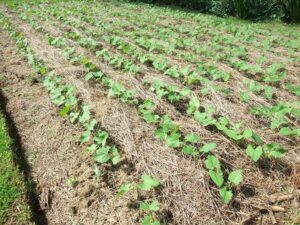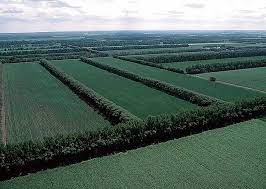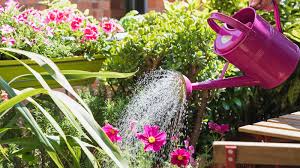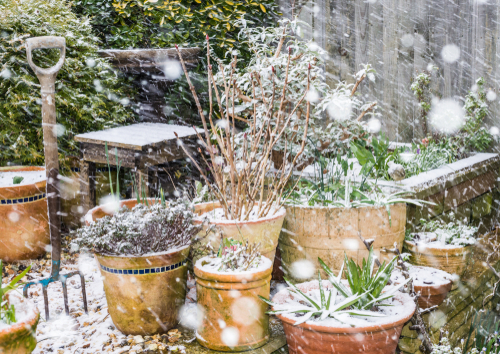Winter can be very harsh on the plants, especially in the regions where the temperature is low, regions with severe cold, snow, and frost. Proper and time-to-time preparations are crucial to ensure that your garden thrives despite these conditions. Conditions such as low temperature, Snow, Frost, Dry winds, Reduced sunlight, and soil freezing are the factors that affect the plants during the winter season. Ways to protect plants from winter damage.
Here are some permanent solutions to protect the plants from winter damage:-
-
CHOOSE HARDY PLANTS
 Choosing and identify the plants that are naturally protect plants from winter damage, or resistant to cold weather is the first step in protecting the garden. Hardy plants can tolerate frost and snow conditions better than tropical or delicate species. At the same time, flowering plants such as winter jasmine and camellia are grown. Choose a plant according to your climate.
Choosing and identify the plants that are naturally protect plants from winter damage, or resistant to cold weather is the first step in protecting the garden. Hardy plants can tolerate frost and snow conditions better than tropical or delicate species. At the same time, flowering plants such as winter jasmine and camellia are grown. Choose a plant according to your climate.
-
MULCHING
 Mulching is the key strategy that is used to protect the plants from winter conditions.
Mulching is the key strategy that is used to protect the plants from winter conditions.
#Steps that are for effective winter mulching:-
(a) Choosing the right Mulch:-
All natural, inorganic wood materials can be used in the framework to protect plants from frost. Organic mulch such as shredded leaves, compost, grass, or pine needles, and as well as non-natural materials such as rocks and gravel, can be utilized.
(b) Timing:-
Timing also plays a crucial role in mulching. Mulching is done after first hard frost to ensure that the ground is cold and mulch will help to maintain a stable temperature in soil.
(c) Preparation :-
Clear any weeds, debris or fallen leaves before doing the mulching process to protect the plants from pest and diseases.
(d) Application :-
Depth: Apply mulch in layers about 2-4 inches thick. Too much impurity can swallow the tissue, and too little may not provide enough protective effects.
Cover: Place the mulch evenly under the plant, spreading it out to where it gets wet. Avoid directly contaminating the roots to prevent pest issues.
-
WINDBREAKS
 Wind can cause damage by drying the plants and breaking the branches of the plants. Creating windbreaks with fences, Walls can shield your plants from the winds.
Wind can cause damage by drying the plants and breaking the branches of the plants. Creating windbreaks with fences, Walls can shield your plants from the winds.
-
PROPER WATERING
 Make sure your plants are well watered or well watered before the first frost. Well-watered plants are more frost tolerant. But be mindful of overwatering, as wet soil can freeze and damage the roots.
Make sure your plants are well watered or well watered before the first frost. Well-watered plants are more frost tolerant. But be mindful of overwatering, as wet soil can freeze and damage the roots.
-
SOIL AMENDMENTS
 Improving soil structure can enhance the plant’s ability to withstand winter stress. Adding organic matter, such as compost, improves soil drainage, which is important in preventing root rot, and other water-related issues. Well-drained soil helps avoid the freezing of waterlogged roots.
Improving soil structure can enhance the plant’s ability to withstand winter stress. Adding organic matter, such as compost, improves soil drainage, which is important in preventing root rot, and other water-related issues. Well-drained soil helps avoid the freezing of waterlogged roots.
-
PROTECTIVE COVERS
Using protective covers like frost cloths, or old bedsheets can help shield plants from frost and extreme cold. These covers trap heat and protect against desiccating winds. Ensure that the coverings do not touch the plant leaves directly, as this can cause damage.
7.PRUNING AND MAINTENANCE
 Proper pruning and maintenance before winter can prevent damage. Remove dead parts or diseased branches to reduce the risk of breakage from winter, and snow and ice, or snowfall. Pruning also helps improve air circulation which can reduce the likelihood of winter diseases.
Proper pruning and maintenance before winter can prevent damage. Remove dead parts or diseased branches to reduce the risk of breakage from winter, and snow and ice, or snowfall. Pruning also helps improve air circulation which can reduce the likelihood of winter diseases.
By using this sustainable solution, gardeners can create hardy soil that withstands the challenges of winter. With proper planning and preliminary measures, and your plants can come out of winter healthy and ready to flower in the spring.
You can also check some more information on How To Create A Mind-blowing Lawn Design For House
-
Plant protection blankets can be use for covering the plants:
Apply our breathable Easy Gardener Natural Burlap to gloves or snowflakes. Reinforce the fabric with reusable clotheslines or accessories for clothes and the garden.
-
Hot beds:
An old idea exists for creating a protective covering for plants that can function as a blanket or raised bed when not in use, thereby serving double duty for frost protection. If a heated bed is hollow shallow interior is dug, secured, and then filled with fresh litter in the structure.
The coarse sand covers the weeds, and plant pots, and flats are placed on top. The ash is vigorously decaying, producing heat for several weeks. Once the heat has died down, the manure can be used as compost and the wood can be turned back into a cool blanket or raised bed.
Conclusion:
It is clear that winter can damage a lot to your plants in many ways. So , I am providing some of best tips to protect plants from winter damage, and also these methods can easily done by a person to protect plants. Its upto you which way do you select to protect you plants form winter damage.
FAQ’s
- What are sustainable solutions to protect plants from winter damage?
Sustainable solutions include planting frost-resistant varieties, using mulch, and windbreaks, spraying drought-resistant chemicals, or mulching placement on, and covering or covering vegetation.
- How do cold hardy plants help protect against winter damage?
Less cold-hardy plants are more likely to be affected and potentially injured by frost damage and extreme cold temperatures. In contrast, cold-hardy plants are better equipped to withstand such conditions.
- What role does mulch play to protect plants from winter?
Water-based mulch keeps the soil permeable, neutralizes temperature fluctuations, or conserves moisture and protects the roots from freezing. It acts as an insulation against winter cold and reduces the risk of snow formation.
- What types of plant cover or hedges are effective for winter protection?
Materials such as blankets, snow blankets, and plastic coverings provide protection for protect plants from winter or freezing temperatures. And Vegetation or frost can cover or protect trees.
- Are there any specific considerations for using this sustainable solution in different climates?
Yes, the effectiveness of this solution can vary depending on the local climate. For example, areas with extreme winter cold may require hardwood or additional wind protection compared to milder climates.
- How do I know the best combination of sustainable solutions for my garden?
Check your local climate, plant species, and susceptibility to winter damage. Consult with garden specialists or extension offices for personalized advice on selecting and implementing the most effective sustainable solutions for your specific needs.

